The standards are ridiculously high.
All those perfect bodies, perfect meals, perfect smiles and perfectly decorated homes can make you feel lousy.
Could all these perfect images be messing with your brain?
Absolutely.
This why late last year I took the plunge and deleted all my social media accounts. All that social comparison (and the general toxic vibe) was getting me down. It may be getting you down, too.
You’ve probably seen the following optical illusion: The Muller-Lyer illusion
In this illusion lines of the same length appear to be different lengths. But they’re not. The lines are exactly the same length.
I love optical illusions because they show us how the human mind can play tricks on us. We are so sure we are right about something (“That line is longer!”) but it turns out, we’re wrong.
Social media presents us with a highly curated version of other people’s lives. You’re exposed to the very best bits. This distorts your perception of reality.
As Professor Dr Laurie Santos states:
“If you imagine people have a plot in their life of like things that are just kind of super boring, or bad, or to things that are awesome, people aren’t snap chatting this stuff [the super boring and bad stuff] unless it’s like really funny . . . they’re usually snap chatting this stuff [the awesome stuff], right?
So you’re not seeing the right distribution. But in your own life, you see the distribution. You look at other people’s Snapchats and you’re like, “Everybody else’s life is awesome and everybody else is like doing cool things that I’m not.”
It’s in our biology to trust what we see with your eyes. So we get easily fooled into believing the highlight reel on social media.
Behind the edited photos, we can’t see the other person’s struggles.
But unlike most of the people you follow on social media, you know yourself well. You know that your life is not all ponies, kittens and rainbows. Life is messy.
If I was to fill your social media feed with the thoughts and feelings of some of the students that I have worked with, here is what some status updates would say:
• “My teachers are talking too fast. I can’t keep up! #feelingstupid”
• “I find myself swinging from not eating at all to snacking excessively. What is wrong with me?”
• “I can’t sleep at night. I manage 1 to 2 hours max. I am sooooo tired.”
• “My maths teacher is a bully. She told me to start using the big brain that is inside my tiny head. My mental health is going down hill because of her.”
• “My ex-boyfriend is toxic. I have to see him everyday at school. Ugh. It’s awful.”
• “I can’t find part-time work. I need a job. No one wants to hire me. Why don’t they want me?”
• “I’m drowning in work. I don’t know how to study. I’m not sure I can do ATAR.”
• “Some boys were making jokes about my arms. They were saying I have hairy arms. So what did I do after school today? I shaved off all the hair on my arms.”
• “I keep failing OLNA. I can’t do maths. I think there must be something wrong with my brain. I need to get a diagnosis.”
• “On my first day of school I felt sick and I threw up before going to school. I felt so sick and anxious when I arrived at class. . . I really wanted to make a good first impression on my first day but I feel like I blew it.”
• “Now I’m in year 11 and things are more serious. I have to think about my future . . . it’s a bit scary because I have no idea what I want to do.”
When I talk to students, I can often see the worried look in their eyes. Their eyes say . . .
“What the hell is wrong with me?”
But here’s what I want to say to these students . . .
“There is nothing wrong with you. You’re perfectly fine. You’re doing just fine.”
The bottom line is this . . .
That doesn’t make you weird or defective. That just makes you human.
In the book Happy, Healthy Minds by the School of Life, the authors say the solution is simple:
I realise this sounds really harsh. But here’s what they mean by this . . .
We all do foolish things.
We all feel anxious and nervous from time to time.
We all bomb out on tests and assignments.
But that’s okay!
Remember, you are human.
Accepting you’re an idiot (just like everyone else) should give you some freedom to try new things. Next time things don’t quite turn out, you’re less likely to beat yourself up. You can practice a little self compassion.
The School of Life also says it’s important to remember this . . .
“ Every so often, things will go right: we make a friend, we get a part in the play, we learn a language . . . “
In short, life doesn’t have to be perfect to be good.
So embrace your quirks. Accept you’ll make mistakes. And please, go easy on yourself.
Share This:
Procrastination feels heavy.
But what if we could turn combating procrastination into a fun game?
Lately, when I catch myself avoiding a task, I’ll play a little game to see if I can get myself to move in the right direction.
I’ve discovered that it’s best to approach any task with a curious and playful mindset. If you take yourself too seriously, all the joy and fun can get stripped from the process.
Often, when I play this game, I surprise myself because the strategy works! I’ll be off and running with a task I procrastinated on for days.
But sometimes a strategy won’t work. That’s okay. When this happens, I usually take a little break before trying another approach.
I don’t claim to be a grandmaster at playing the game of combating procrastination. But these days, I can catch myself when procrastinating, notice the warning signs, and get moving in the right direction.
In this blog, I share how you can combat procrastination in a fun and playful way to fulfil your intentions and accomplish your goals.
Are you ready to play?
Let’s begin!
If you want to play this game of combating procrastination, you first need to understand what procrastination is and the rules of the game.
I recommend you play this game on your own so you’re not competing against anyone else. There’s no first or second place, no runners-up, and no one wins a trophy.
You can play with others, but it’s a collaborative game where you cheer each other on and gently coach each other into action.
It’s also a game that never ends because the work never ends. You are constantly learning and growing.
In her book ‘Procrastination: What it is, why it’s a problem and what you can do about it’ Dr Fuschia Sirois defines procrastination as:
“ . . . a common self regulation problem involving the unnecessary and voluntary delay in the start or completion of important intended tasks despite the recognition that this delay may have negative consequences.”
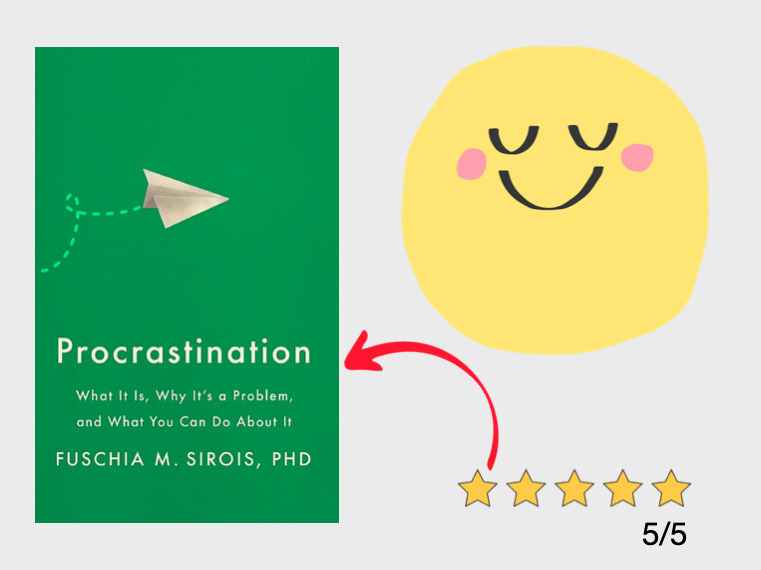
In other words, procrastination is:
Delaying a task + you know you are causing your Future Self pain and suffering.
There are some simple rules you need to understand to combat procrastination. Once you cement these rules in your brain, life becomes easier. Instead of experiencing constant resistance, you discover ease and flow.
Difficult work tends to bring up unpleasant emotions, such as boredom, stress, anxiety, fear, and frustration.
Most of us don’t like experiencing these feelings, so to repair our mood, we procrastinate. We avoid work and engage in easier, more fun tasks (e.g., scrolling through social media).
At the heart of combating procrastination is allowing yourself to sit with unpleasant feelings and push past them. Resist the urge to run to your devices. If you can do this, that’s 80% of the battle.
Pushing through the discomfort and making a start is a significant milestone worth celebrating.
Often, we wait for the perfect time to start a task. But it’s an illusion that there is a perfect time.
The perfect time is right now, amid the messiness and chaos of life.
“But I’m not feeling motivated!” I hear you say.
That’s okay. Make a start regardless of how you feel because here’s the part most people don’t understand:
Motivation follows action
In other words, you have to get moving for motivation to show up.
There are many great strategies and tools that can help you get started with a task, even when your motivation levels are low.
Once you have a selection of strategies and tools and you’ve practised using them a few times, you will feel more confident in your ability to combat procrastination.
Here are a few of my favourite strategies and tools for getting started with my work:
Fear is a significant driver of procrastination: fear that you won’t be able to do it, fear of failure, and fear of the unknown.
When you move your body, you decrease fear and anxiety. Movement can also help to calm and focus your mind and boost positive emotions.
This is why I start my day with a 20-30 minute run on my treadmill. It bathes my brain in feel-good chemicals, makes me feel stronger, and prepares me for the challenging work I’m about to face.
When a task feels big and overwhelming, it’s easy to procrastinate. But can you do 10 minutes on the task?
When I set a timer for 10 minutes, my brain thinks, “I can do 10 minutes. Easy!”
My brain then knows the task (and the unpleasant feelings) won’t last forever. The worst-case scenario is I experience 10 minutes of mild to moderate discomfort. When the timer goes off, I have a way out. I can do something else.
But what usually happens is after 10 minutes, I realise the task isn’t as bad as I thought it would be. The motivation has kicked in, and I’m on a roll.
When struggling to write my PhD, I attended a workshop led by an academic coach. She encouraged me to “Write crap” (her words, not mine).
This helped me to get over the perfection hump and make a start.
Most (if not all) great works started as rough drafts. The problem is we don’t see those rough early versions. We only see the polished final product. This messes with our minds and can lead to perfectionist tendencies kicking in.
Embrace the first messy draft. Celebrate it! You have to do it to get to the good stuff.
In the book ‘Everything in its Place’, Dan Charnas recommends the ‘Slow-but-don’t-stop’ technique for doing things you don’t want to do.
Here’s how it works:
If you’re feeling resistance towards a task, start doing it, but move very slowly. Breathe into the discomfort. Take your time.
Charnas writes that as you use this technique:
“You’ll still hate it [the task] but your task has become a moving meditation or like a game.”
For example, I used this strategy on the weekend to sort my laundry. The first step was to pick up the basket full of clothes and place it on my bed. Then, I picked up one item at a time and put them into piles (e.g., socks, activewear, and undies). I then selected a pile of items (socks) and dealt with one item at a time.
I’d usually rush to fold my clothes and feel slightly annoyed by the whole process (“Ugh, what a chore!”), but this time, it felt different. It felt like a meditation. I felt calm and grounded as I folded my socks.
The beauty of this technique is that the work will still get done, but as Charnas points out, you don’t give up control. You still have forward momentum.
As the Mexican proverb goes:
“An ant on the move does more than a dozing ox.”
Are there things in your workspace that distract you? Is there anything that reminds you of more fun stuff you could be doing (e.g., a video game console or your phone)?
Please get rid of those things or make them harder to access.
My phone is my biggest distraction. This is why I keep it away from my body in another room whenever I need to do focused work.
I’m currently experimenting with Mel Robbin’s 5-Second Rule. The 5-Second Rule is simple:
The moment you have the instinct to do a task before your brain can come up with an excuse not to do it, you count backwards ‘5 . . . 4 . . . 3 . . . 2 . . . 1!’ and you do it.
In her book ‘The 5 Second Rule’ Robbins explains the psychology underpinning the strategy. She writes:
“The counting distracts you from your excuses and focuses your mind on moving in a new direction. When you physically move instead of stopping to think, your physiology changes and your mind falls in line . . . the Rule is (in the language of habit research) a “starting ritual” that activates the prefrontal cortex, helping to change your behavior.”
The ultimate way to combat procrastination is to create a habit or a ritual. You need something that signals to your brain it’s time to engage in a particular behaviour.
With habits, you don’t have to stop and think, “What do I need to do now?”. Habits are automatic. Your brain knows exactly what it needs to do, and you do it.
For example, I have a habit of running on my treadmill before I launch into my day. My brain knows that after I put on my gym clothes and shoes, I turn on my treadmill and hit the speed button to start my warm-up.
I carry these behaviours out even when I’m not in the mood to run. That’s the power of habits.
Then, I suggest you cut yourself some slack.
Forgive yourself for procrastinating, pick a strategy, and get moving.
Most of us don’t do this, though.
We bag ourselves out in an attempt to motivate ourselves. The problem is this rarely works.
Dr Sirois says that intense self-criticism leads to negative thoughts, which lead to negative feelings. We end up feeling demotivated, which causes us to procrastinate even more!
You can stop the vicious cycle of procrastination by practising being kind to yourself.
If you follow these simple rules and be playful with experimenting with these strategies, you can get a better handle on procrastination.
Like anything in life, the key is practice. The more you practice allowing yourself to feel the unpleasant emotions instead of running from them, the better you’ll do. The more times you practice a strategy, the more natural it will feel and the sooner it will become a habit.
One foot in front of the other. You can do this.
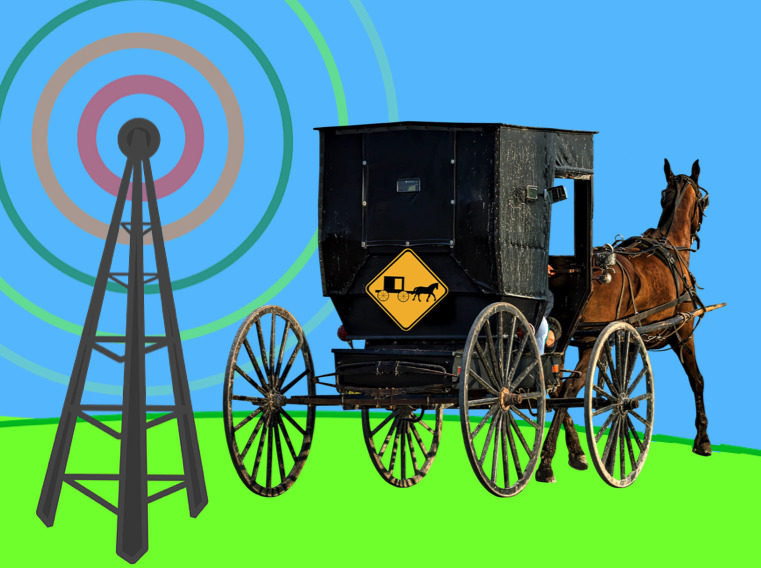
If I’m honest with myself, there was a time when technology was doing me more harm than good.
On Facebook, I frequently fell into the comparison trap (comparing myself to people who had posted delicious dinners, amazing holiday photos, etc).
On Twitter, I’d get baited by trolls (and I’d foolishly take the bait).
Throughout the day, I’d constantly check my phone and email, which left me feeling jittery and chaotic.
Big Tech was constantly hijacking my time, energy, and attention. Every time I retreated to my devices for a quick shot of dopamine, I moved further away from my goals. I didn’t like this, and I knew something needed to change.
Over the past three years, I’ve implemented many practices to regain control of my time, energy, and attention (including deleting all social media).
These practices have made a big difference in my life. But I’m well aware that not everyone feels the same way I do about Big Tech, nor are they in a position to be able to delete all their accounts.
Following a school presentation, I spoke with a small group of year 8 students. I shared with them that I didn’t use any social media, to which a year 8 girl quickly chimed in:
“My grandma has Facebook. What’s your excuse?”
Her words struck me like a bolt of lightning. I didn’t know what to say.
It highlighted how adopting these apps is the norm for a young person.
When everyone else has a smartphone and is using social media (including your parents and grandparents), why would you question using them?
I couldn’t forget the year 8 girl’s words. While I appreciated her candidness, it left me slightly disturbed.
At the same time, it increased my motivation to resist Big Tech. I started searching for role models: people actively resisting Big tech and this hyperconnected, fast-paced way of life.
One community kept popping up in my research: the Amish.
The Amish are often portrayed as being technologically impaired. A classic example is Weird Al Yankovic’s music video Amish Paradise (a parody of Coolio’s mega-hit Gangsta’s Paradise).

In this video, Weird Al sings:
I never wear buttons but I got a cool hat
And my homies agree I really look good in black, fool
If you come to visit, you’ll be bored to tears
We haven’t even paid the phone bill in 300 years
But we ain’t really quaint, so please don’t point and stare
We’re just technologically impairedThere’s no phone, no lights, no motorcar
Not a single luxury
Like Robinson Crusoe
It’s as primitive as can be
While the Amish still mainly travel by horse and buggy and shun many modern technologies, such as televisions, radios, and cars, they are not ‘technologically impaired’ as Weird Al makes out.
When it comes to cultivating healthy digital habits, there is a lot we can learn from the Amish.
The Amish have a set of strategies that guide the adoption and use of different technologies. These strategies have allowed them to avoid being pawns for the goals of Big Tech companies, which make massive profits by seizing people’s attention.
I recently read a fascinating book called Virtually Amish, written by Dr Lindsay Ems. For her PhD research, Dr Ems spoke to Amish people about their relationship to modern technology (e.g., smartphones).

She argues that the Amish take control of their tech tools and thrive. Through adopting similar practices, we can thrive, too.
Below, I share how you can thrive by emulating Amish practices and beliefs around technology:
The Amish are not technophobes. They are ‘technoloselectives’.
They carefully consider the tech tools they’ll adopt and their functionality, tweaking them to help them achieve their goals.
The Amish don’t mindlessly purchase the latest gadgets and gizmos. Instead, they think about their values and goals and how the technology could cause unintended harm to themselves and the wider Amish community.
What are your goals?
Do your tech tools help you achieve them, or do they distract you from them?
The Amish are guided by their values (i.e., the things that are most important to them). Their values underpin everything they do.
So, what exactly do Amish people value?
• Community
• Connections with others
• Living a simple and slow-paced life
• Living a spiritually rich life
• Being self-sufficient
The Amish use these values to guide their adoption of technology.
An example of this can be seen with the arrival of the home telephone (not smartphone). Dr Ems shares how the Amish decided to ban the telephone from being inside the family home.
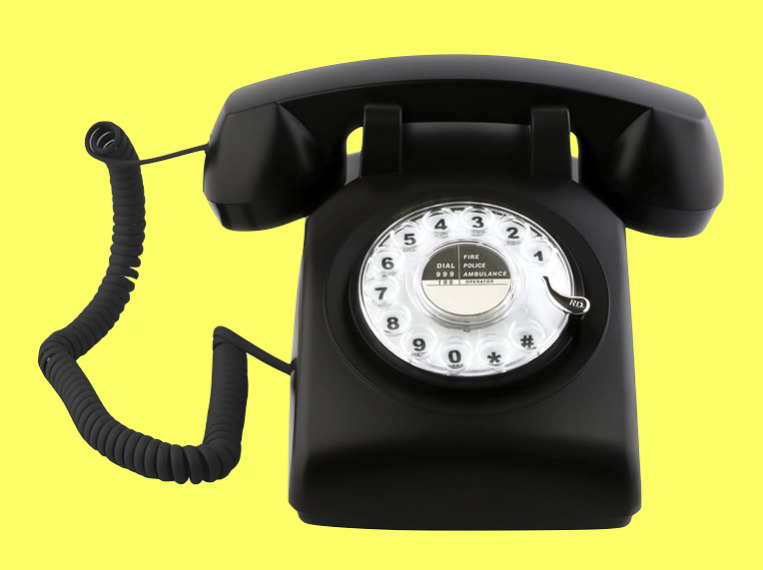
This ban came about after careful consideration and reflection on their values. The Amish value connections with family, friends, and the community. They don’t want to be the kind of person who interrupts a conversation by answering a telephone call. For this reason, telephones are located outside Amish family homes or nearby.
What are the things that are most important to you?
How does technology impact on those things?
Does it enrich those things or diminish them?
The Amish understand that technology can cause harm. Subsequently, they intentionally delay adopting new technology until they see its impact on others.
Does it destroy family life? Does it wreak havoc on their ability to pay attention and distract them from their spiritual life?
If so, the technology threatens their culture and religion, and for these reasons, it should be avoided.
Before adopting a piece of technology, the Amish need to be clear about two things:
1) The functionality of the technology (what it can do)
2) The potential social impacts of the technology
Once they deeply understand these things, it is then decided whether the technology is adopted or not.
It may come as no surprise that Amish people view the smartphone as an incredibly dangerous innovation. Many Amish communities have bans on this device.
How do you feel after spending time on social media?
Have you seen things posted on social media that weren’t true or were exaggerated?

When an Amish person wants to use a new technology, that technology will go through a formal decision-making process.
The community (in particular, the leaders) will consider the future with this technology. They’ll try to imagine how the technology could change their way of life.
Questions the Amish reflect on include:
• What are the advantages and disadvantages of the technology?
• What might come with it that we might not anticipate?
• Could someone get addicted to it?
• Is it a need or a want?
• Can the technology be restrained?
In her book Virtually Amish, Dr Ems provides the example of an Amish business owner asking the community leaders if he could have permission to use a label maker for his business.
After careful consideration, the leaders ruled label makers could be allowed for the following reasons:
• They are not addictive
• They can’t be used for recreational purposes (e.g., playing games or entertainment)
Think of a new technology (device or app) you want to adopt. Could it become addictive?
Many Amish people believe the issue is not whether you use a smartphone or social media but how you use it. It’s important that the Amish remain in control of their use of tech and place limits on it.
It’s also important that the technology is not visible (i.e., you don’t pull your smartphone out in Church or during a conversation). Being discrete in the way one uses technology shows respect for Amish values.
How do you use the tech in your life?
Are you in control of your use?

Amish people think about not just how they use the technology but what kind of person they become when they use it.
This point resonated with me deeply. I can’t say I’ve always liked who I become when I use certain technology.
A few years ago, I babysat my friends’ children when my friends went out for a kid-free meal. I look back and cringe when I think about how the experience unfolded.
Before going to my friend’s place to start babysitting, I got into a heated text discussion with some people in a group chat. Things were said that upset me.
For most of the night, I was on my phone, texting back and forth, not present with these young children. At one point, the little boy tugged on my arm to get my attention. “Aunty Jane, come play!” he said.
What can I say? I felt terrible. This certainly was not my finest moment. I had become the kind of caregiver I am usually quick to judge: distracted and disengaged.
I vowed to avoid trying to resolve issues by text and leave my phone at home next time to be fully present with the kids.
When you use social media, what sort of person do you become?
The Amish take modern tech tools and modify them to help them achieve their goals.
The plain mobile phone is an example of this. Amish people have created a mobile phone that can only make calls. It doesn’t have a camera, games, access to the Internet, or the ability to send text messages.
Similarly, the plain computer allows Amish to make spreadsheets, do word processing, and construct simple drawings. This allows them to complete tasks without being distracted by other things.
In other words, the Amish create what David Kadavy (author of Mind Management, Not Time Management) would refer to as sticky tools. A sticky tool allows you to stay focused on a task without getting distracted.
What sticky tools could you consider adopting (e.g., a basic flip phone and Internet blocker app)?

The Amish take pride in growing their own food, raising barns, baking their own bread, tinkering with robotics, inventing, and making their own clothes. They are not big consumers, but they embrace a simple lifestyle and encourage human creativity.
In the modern non-Amish world, many of us are doing the polar opposite of this. We have fallen into the trap of consuming content mindlessly online (e.g., watching people bake bread instead of baking our own bread).
Don’t get me wrong—the Internet is an excellent learning tool to help us build our skills. I have turned to YouTube for many instructional videos on how to make and fix things. But doing this requires discipline because it is all too easy to get derailed by other distracting videos.
The bottom line is this: the more time we spend online, the more ads we are likely exposed to and the more our consumptive desires are stirred up. Is it any wonder so many people feel so dissatisfied with their lives?
Instead of mindlessly consuming, what can you create today?
The Amish embrace tech with inbuilt friction. In fact, inconvenience is considered a virtue.
Dr Ems shares that many Amish technologies intentionally contain ‘speed bumps’ and ‘friction’. The reason for this friction is to prevent Amish people from wasting time on the device.
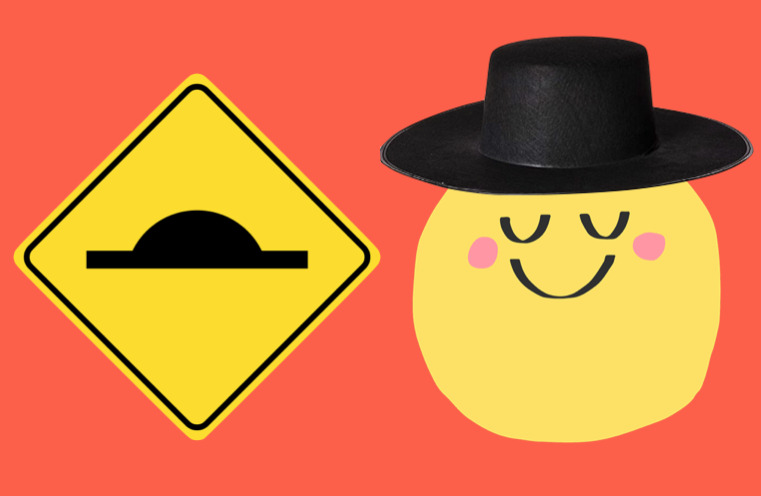
I’ve found this is one of the positives associated with using a ‘basic phone’.
Last year, I experimented with using a basic flip phone with limited functionality (I could only make calls and send texts). Texting on this phone was so painfully slow that it made me want to avoid getting into long text discussions with people. It was easier to pick up the phone and call people.
Using a smartphone to text your friends may be easier than making a phone call, but as the Amish strongly believe, easier is not always better.
How can you build friction into your tech use?
Can you embrace analog alternatives to decrease your screen time?
How much control do you have over your time, energy, and attention? As Chris Bailey writes in his book How to Calm Your Mind, “On the Internet, our intentions very quickly slip from our grasp.”
If you want to thrive online and offline, consider adopting some of the tech habits of the Amish. By limiting their tech use, the Amish have been able to remain mentally free and protect their way of life.
If more of us adopted Amish tech practices (e.g., being intentional with our tech use and placing limits on it), we’d most likely feel calmer and less anxious. We’d also spend more time engaged in activities that bring us joy and are aligned with what we value.

Where I live in Perth Western Australia, there’s an event that happens once a year that demands your attention like no other: The Royal Show.
At this show, there are extreme rides, giant fluffy toys to be won, baby animals you can pat, and much, much more.
Wherever you are in the world, you probably have an event like this, too. And if you do, chances are there is something at the show that is completely attention grabbing . . .
I’ve come to see show bags as being an important metaphor for modern life. Let me explain . . .
When I was a child, I couldn’t wait for the show bag catalogue to be released. I would spend hours trawling through the catalogue, carefully selecting my show bags.
These were big and important questions for my 6-year old brain.
When we finally got to the show, my parents and I would wait in the queue at the frenzied show bag stall. I remember looking up at the display of all the bright colourful show bags and feeling really excited.

If you break down the contents of a show bag, there’s a bit of a formula to them . . .
There’s usually a range of ultra-processed sugary and salty snack foods and a bunch of novelty toys.
If you take a good hard look at the contents of most show bags, there’s nothing that’s really nourishing in there. It’s just poor-quality junk food. Or cheap plastic rubbish that is destined for landfill.

As I got older, I wised-up to these overpriced show bags containing mostly garbage. I stopped buying them.
Now you’re probably wondering, “What do show bags have to do with being able to study effectively? How is this a metaphor for modern life?”
I’ve come to see show bags and the Royal Show as being similar to smartphones, specifically social media apps.
If consumed frequently (even just in small doses), they are potentially damaging to our minds, bodies, and the planet.
Think of it like this . . .
But if you were to have a show bag every day, would you enjoy it as much?
Probably not.
According to addictions expert Dr Anna Lembke, if you consume too much of a pleasurable thing, it makes that thing less pleasurable.
This is why they say, “Less is more”.
There’s a reason the royal show only happens once a year and you can’t buy show bags at the local supermarket. It’s a special occasion. Show bags are designed to be a special treat.
It wouldn’t be so special if it happened all the time. After a while, the novelty would wear off. You’d get bored.
As you emptied the contents of your 50th Bertie Beetle show bag or entered the Gravitron for the 100th time, you’d be like “Meh. Big deal”.
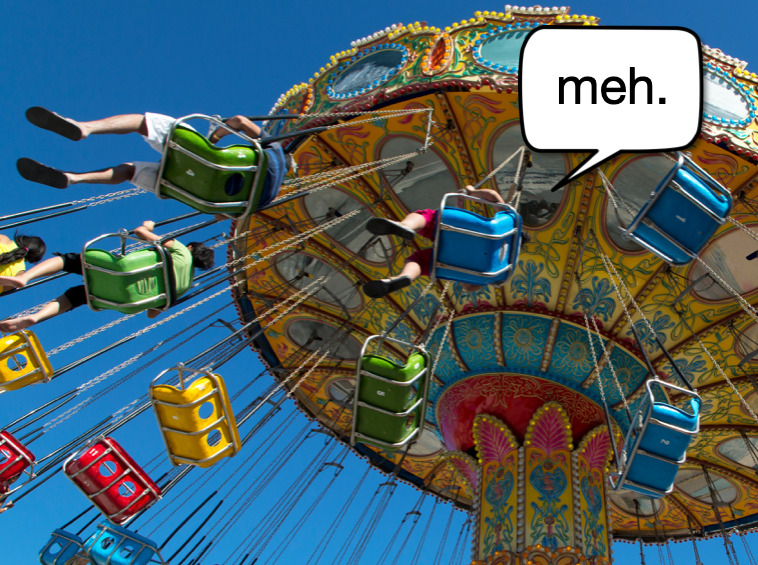
If you don’t believe me, next time you’re at the show take a look at the carnies (the carnival workers). They’re not having fun in sideshow alley. They’re tired. They want to be packing up the rides and getting out of there.
The point is the Royal show and show bags are great once in a while but not all the time.
It’s the same deal with social media. Spending too much time on there isn’t doing you any good.
Switching rapidly from doing your work to your phone and then back again slows you down. It impairs your ability to think and learn. It makes you feel scattered and anxious, too.
It’s time to start thinking of TikTok, YouTube videos and text notifications as the sugary treats, salty snacks, and novelty toys contained in show bags. Nice to have occasionally, but if consumed in large quantities, you’re going to suffer.

Just because everyone is eating Bertie Beetles all day every day doesn’t make it healthy. It doesn’t make this behaviour okay. It just means we’re going to end up with a very sick society.
We can do better. But this means we need to place limits on how much we consume.
When you study with your phone within arm’s reach that’s like having a never-ending show bag of junk food next to you. You can’t fully focus your mind on the task at hand because a part of your brain is thinking about the tasty treats in the bag.
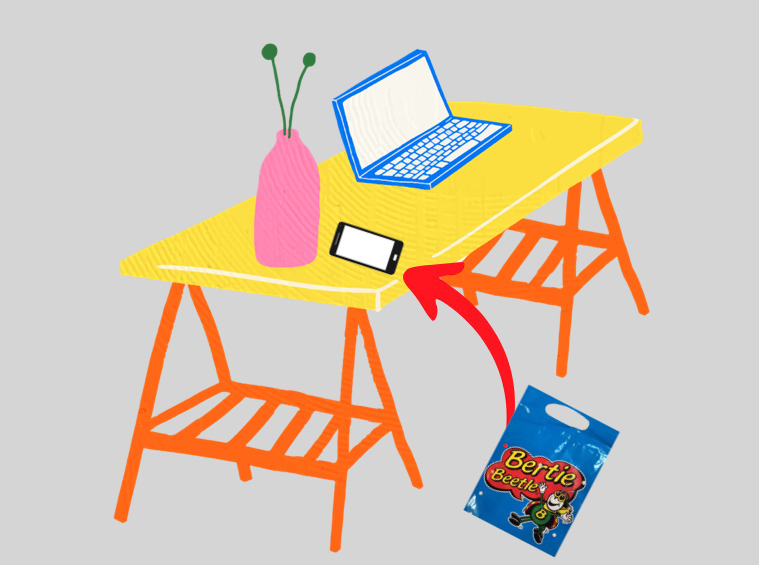
No matter how hard you try not to think about the treats, you can’t help but think about the treats!
It’s not your fault that you can’t resist checking your phone for the treats that await you. Social media apps are designed to be dopamine dispensing machines. Addictive to the core.
How can you fill up on the good stuff (i.e. the stuff that is going to add real value to your life)?
I recently developed a powerful tiny habit. It may sound simple but I highly recommend it. The habit is this . . .
When I notice my phone is in my workspace, I will pick it up and put it away from my body in another room.
In fact, I have a specific home for my phone: it lives in pocket number 1 of a vertical wall hanger in my dining room. I have set times when I can check my phone. But outside those times, my phone stays in pocket 1.

When I put my phone in the pocket, it’s like I’m putting the show bag away on the top shelf of a cupboard and closing the cupboard door. Out of sight is out of mind.
I recommend you give it a shot.
When you first start implementing this habit, you will probably feel a strong urge to grab your phone and look at it. But over time the urge to check your phone will pass.
The thing about focus is it’s like a muscle. You can strengthen it over time by engaging in simple practices, such as putting your phone away when it’s time to do your work and engaging in meditation.
Doing these things may be more difficult than dipping into a show bag or watching TikTok videos, but it’s probably going to deliver far more benefits in the long run.
But most importantly, when you fully focus your mind on what you need to do, there is something inherently satisfying about that. It brings you more joy and satisfaction than any 15 second video could ever deliver.
Image Credit
“Ekka 2004 Showbag Pavillion” by Dr Stephen Dann is licensed under CC BY-SA 2.0 .
Dr Jane Genovese delivers interactive sessions on learning to learn, combating procrastination, exam preparation, how to focus in the age of distraction, habit formation and much, much more!
Get FREE study and life strategies by signing up to our newsletter:
© 2024 Learning Fundamentals